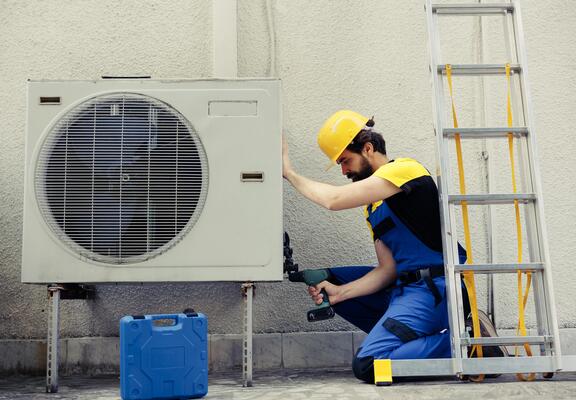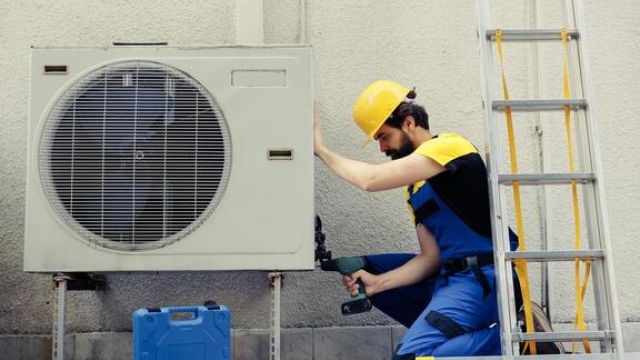
As the seasons shift, our desire for comfort remains constant. The ability to maintain a pleasant indoor environment, regardless of the weather outside, is a modern convenience that many of us take for granted. Heating and air conditioning systems play a crucial role in enhancing our living conditions, ensuring we stay cozy in the winter chill and cool during the summer heat. Understanding how these systems work can empower us to make better choices for our homes, ultimately leading to increased comfort and energy efficiency.
In this exploration of heating and air conditioning, we will delve into the various types of systems available, their operational principles, and essential maintenance tips to keep them running smoothly. By mastering the art of climate control, we can transform our spaces into personal sanctuaries, creating an atmosphere that not only meets our comfort needs but also contributes to healthier indoor living. Join us as we uncover the nuances of heating and air conditioning, equipping you with the knowledge to optimize your home environment year-round.
Understanding HVAC Systems
HVAC systems, which stands for heating, ventilation, and air conditioning, are essential for maintaining comfortable indoor environments throughout the year. These systems work together to regulate temperature, humidity, and air quality, providing the ideal conditions for homes and commercial spaces. A typical HVAC setup includes a furnace for heating, an air conditioner for cooling, and ductwork to deliver the treated air consistently throughout the building.
The heating component, usually a furnace or heat pump, warms the air during colder months. Depending on the fuel source, it can be gas, electric, or oil-based. In contrast, air conditioning units cool indoor air during the summer, using a refrigeration cycle to remove heat and humidity. Advanced systems may also incorporate smart technology, allowing users to program settings and monitor energy usage for improved efficiency and comfort.
In addition to heating and cooling, ventilation is a critical part of HVAC systems. It ensures a continuous supply of fresh air while exhausting stale air, which helps maintain air quality and prevent the buildup of indoor pollutants. Proper ventilation reduces moisture and allergens, contributing to a healthier living environment. Understanding how these components interact is key to mastering your comfort year-round.
Energy Efficiency Tips
Improving energy efficiency in your heating and air conditioning systems can significantly reduce your energy bills and environmental impact. One of the first steps is to regularly maintain your equipment. Schedule professional inspections and cleanings at least once a year to ensure that your systems are running optimally. Replace filters regularly, as dirty filters can restrict airflow and increase energy consumption. Additionally, check for any leaks in ducts or around windows and doors, as these can let conditioned air escape, making your systems work harder. As the seasons shift and our desire for comfort remains constant, it’s important to Learn How heating and air conditioning systems can enhance our living conditions, providing a pleasant indoor environment regardless of the weather outside.
Another effective strategy is to invest in a programmable or smart thermostat. These devices allow you to set specific temperatures for different times of the day, which can lead to substantial energy savings when you are away from home or sleeping. By automatically adjusting the temperature based on your schedule, these thermostats help maintain comfort while minimizing energy usage. Furthermore, consider implementing zones in your home for more targeted heating and cooling, so you don’t waste energy on unused spaces.
Lastly, be mindful of your home’s insulation. Proper insulation can help keep your home comfortable year-round by minimizing the amount of heat lost in the winter and keeping cool air from escaping in the summer. Inspect your insulation and consider upgrading it if it’s outdated or insufficient. In addition, using fans wisely can complement your heating and cooling systems. In warmer months, ceiling fans should rotate counterclockwise to create a cooling breeze, while in winter, reversing the direction helps push warm air downward, enhancing your heating efficiency.
Seasonal Maintenance Checklist
As seasons change, so does the demand on your heating and air conditioning systems. To ensure optimal performance and efficiency, create a maintenance checklist tailored to each season. For spring and summer, focus on your air conditioning unit. Start by cleaning or replacing the air filter to allow for proper airflow. Check the refrigerant levels and inspect the outdoor condenser for debris. Clean the coils and ensure that the drain pan is functioning correctly to prevent moisture buildup.
When fall arrives, turn your attention to the heating system in preparation for winter. Begin by inspecting the furnace and replacing any dirty filters. Ensure that the vents are clear and unobstructed, allowing for effective air circulation throughout your space. Schedule a professional inspection of the heating system to address any potential issues before they become serious problems, making sure your home is cozy and warm when the temperature drops.
Finally, as winter fades and spring approaches, it is essential to perform a thorough check of both systems. Inspect the insulation and sealing around windows and doors to maintain energy efficiency. Look for any wear and tear on the ductwork that may have occurred during the colder months. Regular maintenance not only extends the lifespan of your heating and air conditioning but also ensures a comfortable environment regardless of the season.



